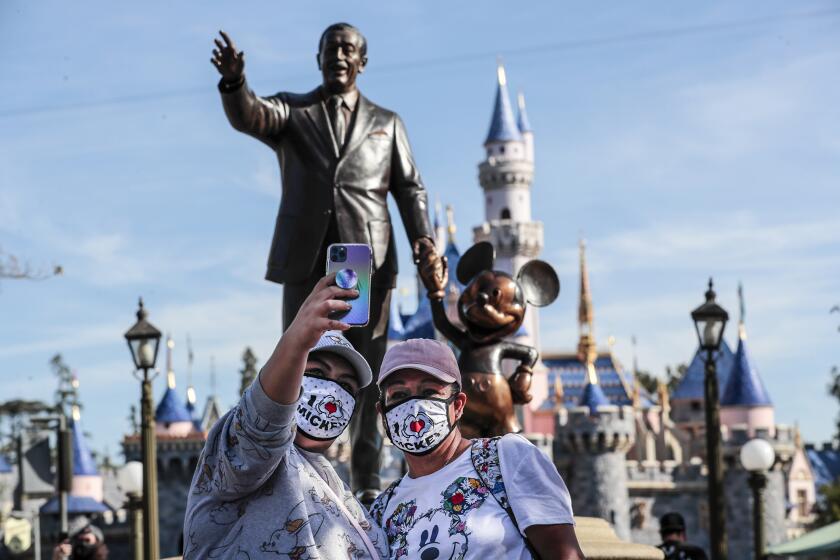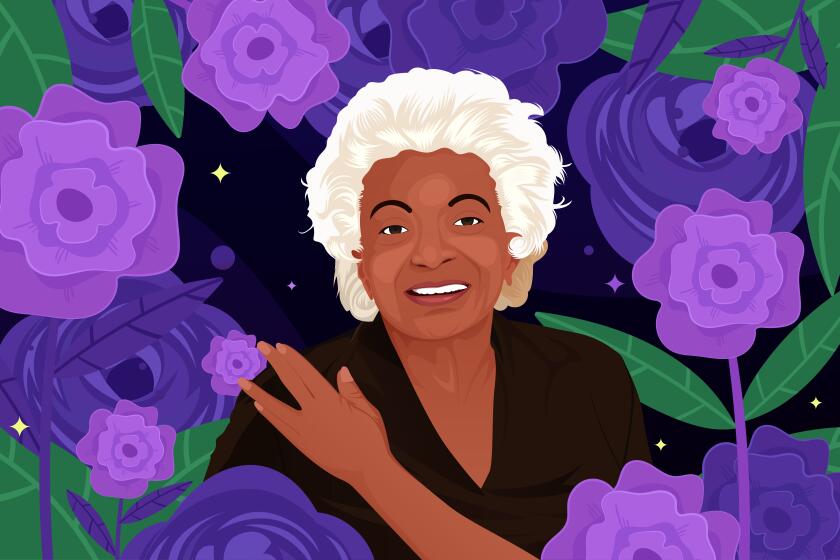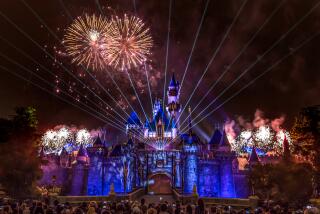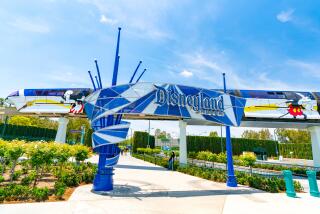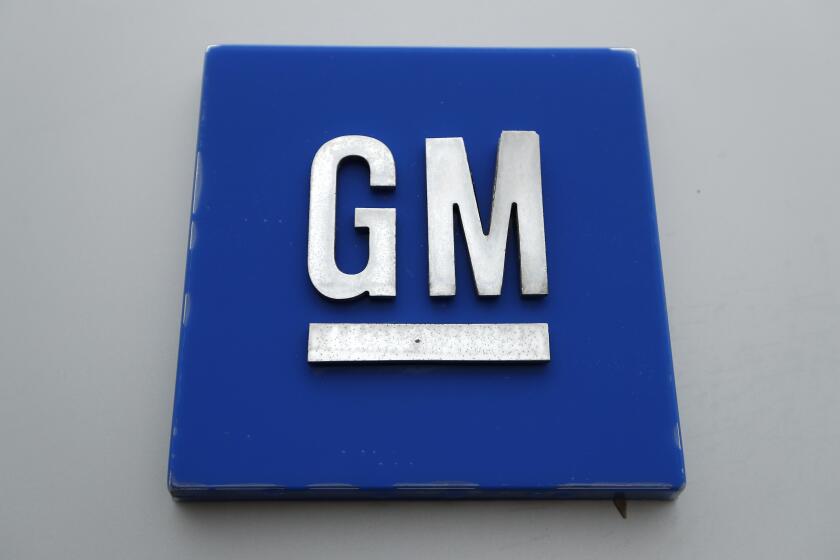Disneyland to launch Genie app with new fees to skip the long lines
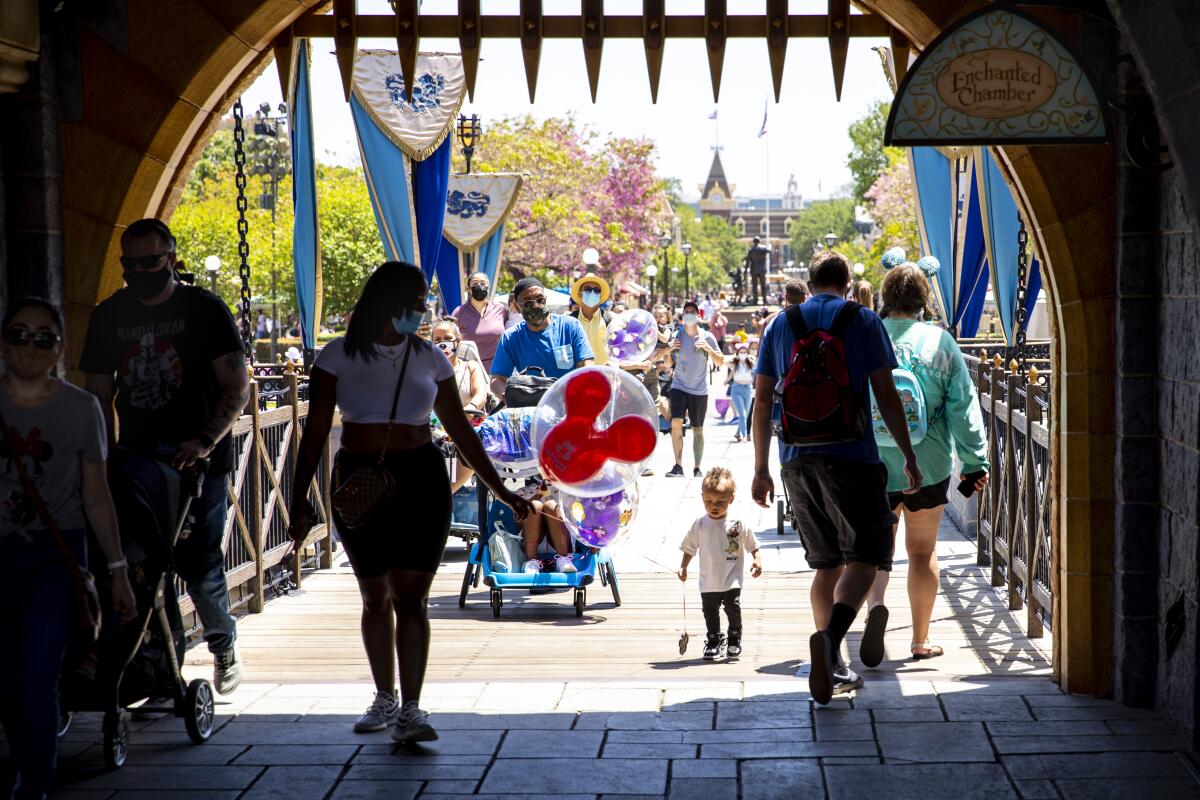
- Share via
Hoping to ease crowding problems at its theme parks, Walt Disney Co. announced plans Wednesday to launch a new mobile app that will allow parkgoers willing to pay extra to skip the wait for the most popular attractions.
The new app, dubbed Disney Genie, represents Disney’s latest effort to address the parks’ biggest headache — long attraction queues — while adding new ways to generate revenue from visitors who already pay as much as $154 per park trip. The app will launch this fall at Disneyland, California Adventure Park and the parks at Walt Disney World in Orlando, Fla.
“We’ve made significant investments in this new technology, which guides you through our theme parks with tips that can help you reduce time in lines,” the company said in an information sheet.
Industry experts said the new fees may spark grousing from some Disney fans, but charging extra for a better experience is a growing trend in the theme park business.
“It may cost you a little bit more, but there are always people willing to pay for that,” said Dennis Speigel, president of consulting firm International Theme Park Services. “It’s where the industry is going to be heading in servicing the guests.”
The new Disneyland Magic Key annual pass program, on sale starting Aug. 25, will require reservations, a change aimed at quelling overcrowding at the parks.
The new app replaces two older systems at Disneyland — the free FastPass and the MaxPass, which cost $20 per day — that let parkgoers reserve a time slot for an attraction to avoid the traditional queues and instead zip into an expedited FastPass lane.
There are three components to the new system:
- Disney Genie is a free app that recommends a visit itinerary based on the attractions, shows and eateries chosen by usersat the start of the day.
- Disney Genie+ is a similar app that costs $20 per day at Disneyland and $15 at the Florida parks. In addition to creating an itinerary, parkgoers can make reservations to get on a ride at a specific time, skipping the traditional queues, much the way visitors used the now-retired FastPass or the MaxPass. Visitors who make a reservation on the app get access to a new “Lightning Lane.” Disneyland will operate more than 15 attractions with Lightning Lanes, and the Walt Disney World Resort in Florida will include more than 40 attractions with Lightning Lanes. Users can make only one reservation at a time.
- The most popular attractions, such as as Radiator Springs Racers at Disney California Adventure and Seven Dwarfs Mine Train at the Magic Kingdom Park in Orlando, won’t be offered for reservation times on Genie+. Instead, park visitors who want to skip the lines for those attractions will have to pay a separate fee through the Genie app that will vary based on the date, the attraction and the park. Disney representatives said they will offer more details “closer to launch.”
The Genie+ app will automatically collect the fees from a credit or debit card account connected to the app. To use the app, parkgoers won’t be required to connect to the resort’s Wi-Fi network, but Disney officials say it will improve the app’s performance.
During the 2019 fan gathering known as the D23 Expo, Disney officials introduced Disney Genie, promoting it as an app that allows park visitors to customize their visit itineraries by giving them real-time tips and updates. The app was scheduled to be launched in late 2020, a debut probably delayed by the closure of Disneyland and California Adventure Park for more than a year due to the COVID-19 pandemic.
The parks will continue to offer the traditional standby lines and the virtual queuing system used at such attractions as Star Wars: Rise of the Resistance at Disneyland’s Galaxy’s Edge.
Earlier this month, the Disneyland resort announced another effort to manage crowds by overhauling its 37-year-old annual pass program, which was canceled in January.
Instead of annual passes that allow holders to visit as often as they want — except for certain blackout days — Disney plans to launch a program this month called Magic Key that will require visitors to make reservations before going to the parks. The new pass program will continue to restrict access on many of the busiest days. Sales begin Wednesday.
Disney will get a $580-million tax break from Florida while moving 2,000 employees from its Burbank and Glendale offices to Orlando.
By requiring reservations, the Magic Key program enables Disney to manage how many parkgoers visit Disneyland and California Adventure Park each day, easing crowding on high-demand days such as weekends and holidays. The new annual pass program ranges in price from $399 for Southern California residents to $1,399 for the pass with no blackout dates.
Industry experts say the old annual pass program allowed too many local visitors into the parks, discouraging international and out-of-state visitors who tend to spend more per visit.
Disneyland’s original FastPass system was introduced in 1999 to give parkgoers a way to avoid long queues. Guests grabbed paper tickets dispensed from kiosks and showed them to ride operators within a specified time slot to jump into shorter FastPass lines.
In 2017, Disney launched a digital version of the system, called the MaxPass. It operated from the park’s smartphone app, but unlike the free FastPass reservation system, the digital MaxPass cost $20 a day and included unlimited downloads of photos taken by park photographers.
The advantage of the MaxPass was that park visitors did not have to stand in line at a FastPass kiosk to retrieve a booking ticket. The MaxPass app could be used to book ride times as soon as guests entered the park.
Nichelle Nichols, the beloved Lt. Uhura on ‘Star Trek,’ is living with dementia and struggling financially. Three parties fight to control her fate.
More to Read
Inside the business of entertainment
The Wide Shot brings you news, analysis and insights on everything from streaming wars to production — and what it all means for the future.
You may occasionally receive promotional content from the Los Angeles Times.
